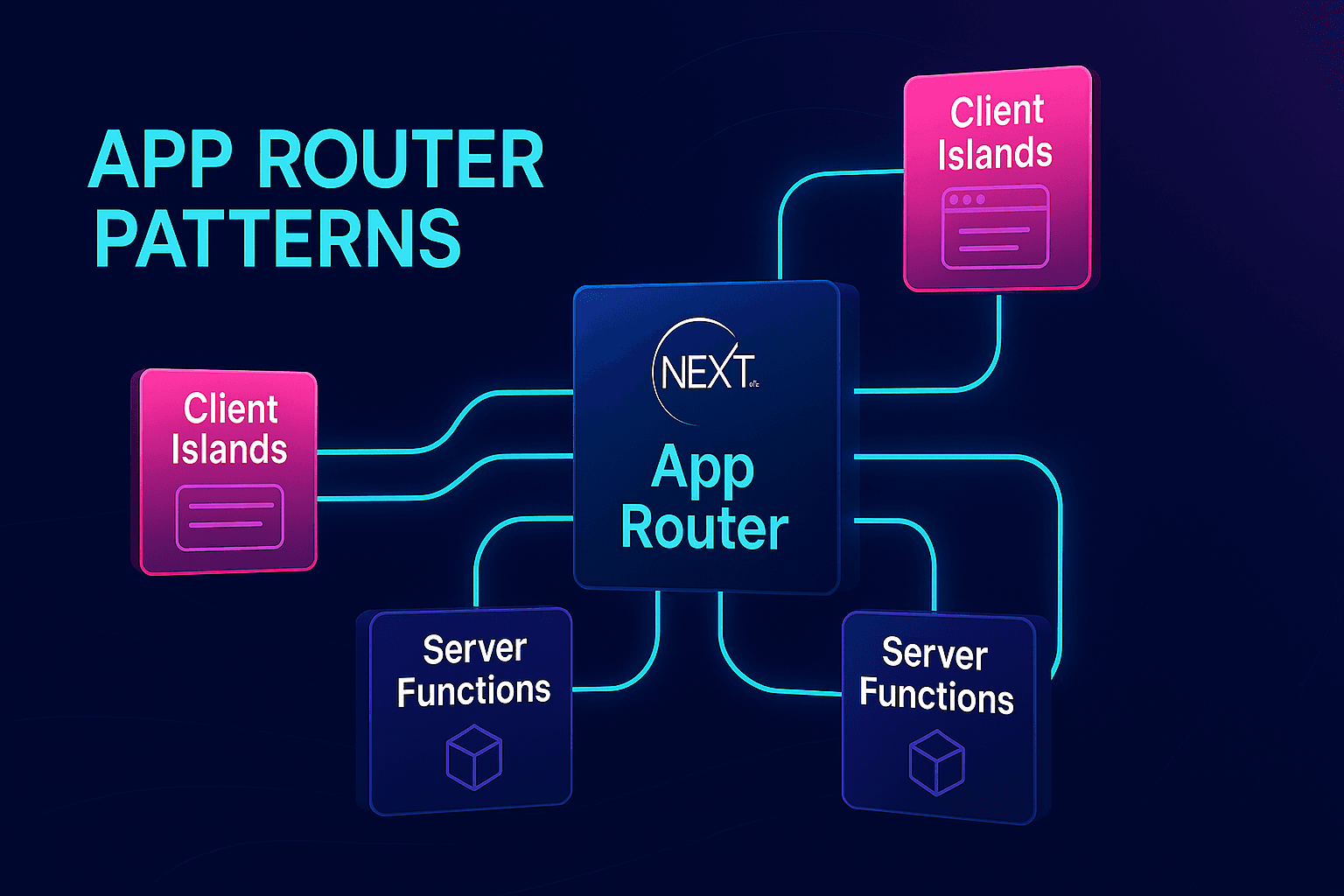Frontend
Next.js Architecture in 2026 — Server-First, Client-Islands, and Scalable App Router Patterns
15 min read

Next.js Architecture in 2026 — Server-First, Client-Islands, and Scalable App Router Patterns
Modern Next.js apps fail due to sloppy boundaries, not due to React or SSR limits. This is the definitive blueprint for building something that won’t collapse as features grow.
1. Architecture Rules
- Server-first → Fetch, compute, render on server.
- Client-islands → Hydrate only interactive parts.
- Strict separation → DB/auth never leak into client.
2. Folder Structure (Clean & Scalable)
app/
(marketing)/
dashboard/
page.tsx
loading.tsx
error.tsx
components/
api/
auth/
payments/
lib/
db/
client.ts
server/
auth.ts
cache.ts
validations/
components/
ui/
forms/
layouts/
3. Data Fetching Strategy
3.1 ISR
Use revalidate for semi-dynamic pages.
3.2 SSR
Use server components for dashboards, personalized data.
3.3 Cache Tags
Tag-based invalidation for granular control.
4. Caching Strategies
- Next.js route handler caching
- Redis for heavy computed queries
- Cache-tag invalidation for content updates
5. Client Components — Allowed Use Cases Only
- Forms
- Charts & animations
- Websocket live UI
- Browser API dependent flows
6. Observability
Track TTFB, INP, hydration time, JS bundle size via OpenTelemetry + instrumentation.
7. CI/CD Rules
- Type check
- Build verification
- Bundle-size delta enforcement
- Route smoke tests
- Custom lint rules — ban server code inside client components
#Next.js#Architecture#React#AppRouter

Written by
Yogesh Mishra